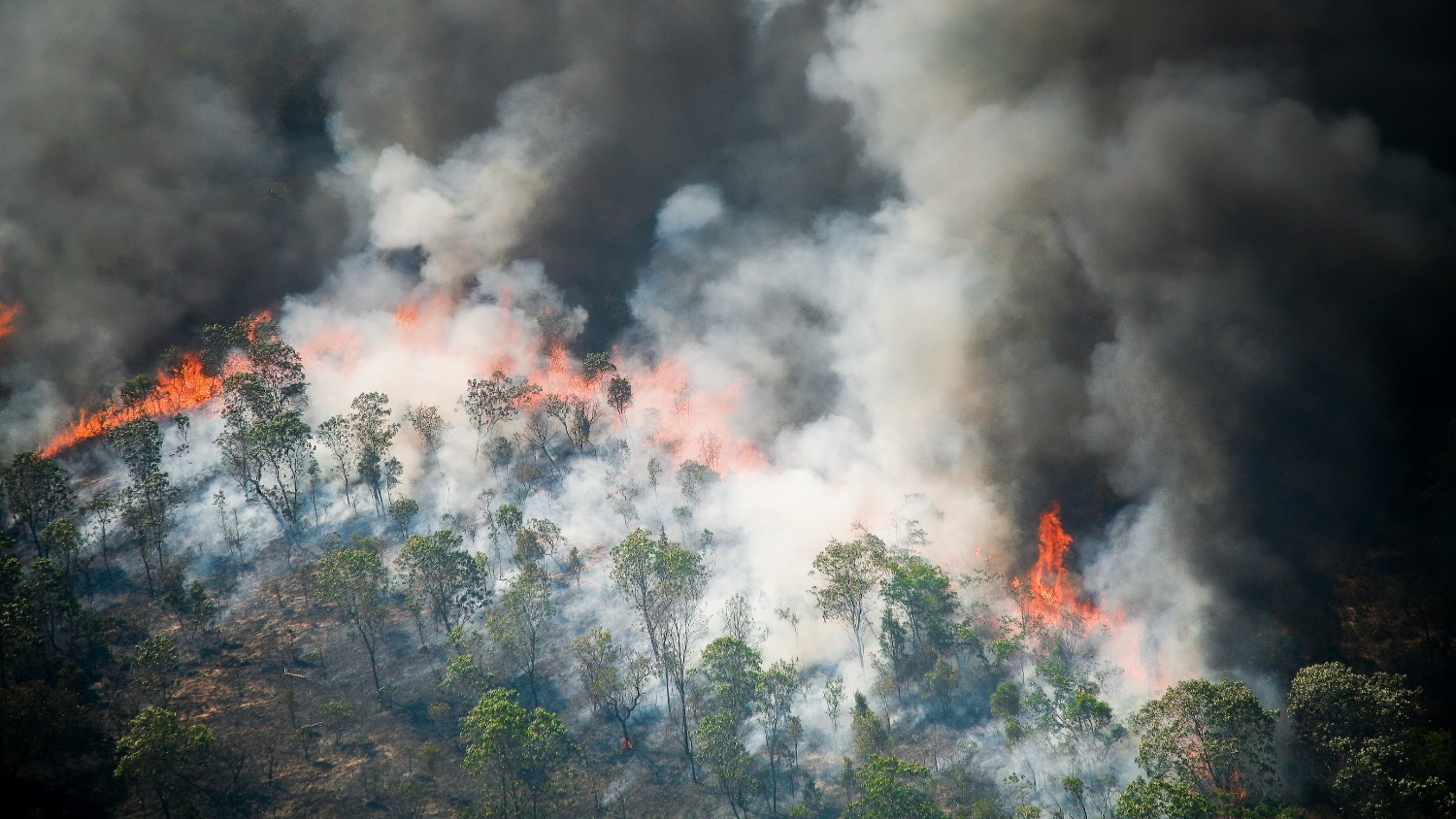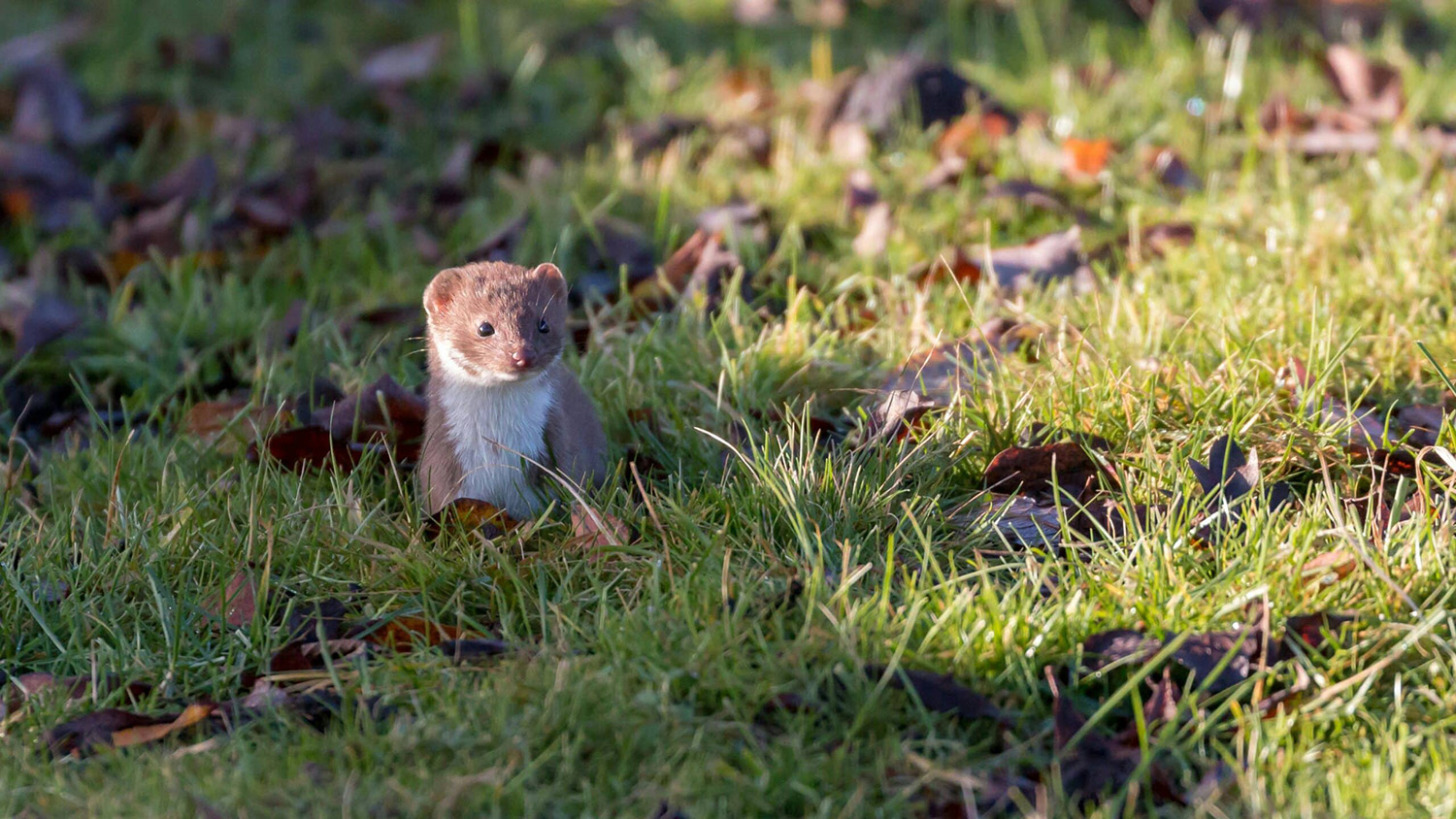Endangered Species Act Revision Could Weaken Habitat Protections for At-Risk Wildlife, Experts Say

Federal agencies are seeking to reinterpret a key word in the Endangered Species Act that could weaken habitat protections for certain at-risk species, according to two wildlife biologists at North Carolina State University.
The U.S. Fish and Wildlife Service and the National Marine Fisheries Service have proposed a rule that would exclude habitat modification and degradation from the regulatory definition of “harm” under the Endangered Species Act.
“If we lose critical habitat protections for threatened and endangered species, especially for those where habitat loss is the driving factor of population decline immediately or in the near future, then those species could face a heightened risk of extinction,” said Chris Moorman, a professor of fisheries, wildlife and conservation biology in the Department of Forestry and Environmental Resources.
Roland Kays, a research professor of fisheries, wildlife and conservation biology in the Department of Forestry and Environmental Resources, added: “The Endangered Species Act, as it is written, is crucial to the protection and recovery of at-risk species across the country. And while there have been many attempts to change the law over the years, it’s held up and worked as intended.”
Established in 1973, the Endangered Species Act prohibits the “harm” of listed species, broadly defined to include any action that injures or kills wildlife. This includes indirect actions like significant habitat modification or degradation.
The proposed rule would narrow the definition of “harm” under the Endangered Species Act to focus only on direct actions like killing or capturing wildlife — a change that has been criticized by environmental organizations for its potential to reduce regulatory requirements for development projects.
Consequences of Habitat Loss
Moorman, whose research is focused on understanding the effects of land use changes and other disturbances on wildlife, said habitat is the combination of food, water and cover that a specific wildlife species requires for survival and reproduction.
Habitat is species-specific, meaning one location may be suitable for one species but not for another. Different species have unique needs and have evolved to thrive in specific conditions and rely on particular resources for survival.
The loss or degradation of habitat ultimately reduces the available space and resources for specific wildlife, and as individual animals are forced to move into smaller areas, competition intensifies for limited resources, especially within species.

When animals struggle to find food, water, shelter, mates and other necessary resources for survival, it can negatively impact population sizes and increase the risk of local extinctions.
Red-cockaded woodpeckers, for example, have very specific habitat requirements, largely relying on mature, open pine forests to nest and forage. The birds excavate nesting cavities in living pine trees, usually older longleaf pines infected with a fungus that softens the heartwood.
In recent years, red-cockaded woodpeckers have experienced increased partial brood loss, where some, but not all, nestlings within a brood die. Scientists think this is partly due to increased competition resulting from increased populations and habitat loss, though NC State University student Lauren Pharr continues to investigate the phenomenon.
Public Wildlife on Private Lands
Fortunately for the red-cockaded woodpecker, the proposed revision to the Endangered Species Act wouldn’t likely have a significant impact on most existing populations as they largely occur on federal lands like national forests and military installations.
The Endangered Species Act mandates that federal agencies conserve listed species, meaning they have a legal obligation to manage their lands in ways that protect and enhance red-cockaded woodpeckers and other at-risk wildlife populations.
Moorman said the proposed revision to the law would likely have more of an impact on federally-listed species occurring on private lands. Private lands have fewer habitat protections compared to federal lands, making them more open to development following the proposed changes in the Endangered Species Act.

Kays, a zoologist whose research interests include wildlife ecology and conservation, added that threatened and endangered bats could also be at risk of experiencing increased habitat loss if the proposed revision is implemented.
Many threatened and endangered bats occur on private lands, relying on forests, caves, abandoned mines and even barns for roosting and foraging. Under the current definition of “harm” in the Endangered Species Act, these sites and others occurring on private lands are all considered protected habitat if they’re inhabited by a listed species.
In 2024, for example, the Florida Supreme Court ruled that a developer must revise its proposal for a 550-home development on 168 acres in Miami-Dade County due to the land serving as a foraging site for the federally-endangered bonneted bat.
Habitat Management is a Balancing Act
Some wildlife species might not be as affected by the proposed revision, depending on where they live. In the southeastern U.S., many animals are adapted to and can even benefit from natural and human-induced disturbances, including timber harvesting.
When practiced sustainably and in conjunction with other forest management techniques, timber harvesting can be used to thin stands and remove hardwood trees, promoting the open, pine-dominated forests preferred by various rare or declining species, including red-cockaded woodpeckers and Bachman’s sparrows.
However, in the western U.S., timber harvesting can be detrimental to the old-growth forests that many species, including the northern spotted owl and Pacific fisher, utilize for survival. These forests have unique structural features like large, old trees, dead trees and fallen logs that provide essential habitat for these animals.
“Habitat management requires a careful balance among competing objectives.”
Moorman stressed that there’s always “winners and losers” when implementing habitat management practices. These practices — ranging from timber harvesting to prescribed burning — can have different impacts on different species, benefitting some while potentially harming others.
“Habitat management requires a careful balance among competing objectives, including financial, social, and ecological, over the short- and long-term,” Moorman said.
Still, policy changes seeking to enable habitat loss or degradation, especially on lands used by certain threatened and endangered wildlife, “will definitely lead to an elevated risk of extinction” for those species, according to Moorman.
Currently, the U.S. Fish and Wildlife Service and the National Marine Fisheries Service are reviewing public comments about the proposed revision before they either finalize the rule as proposed, make modifications or withdraw it.


